Abstract
1. The surface properties of over 250 films of diplamitoyl lecithin (DPL) and Tween 20 on distilled water have been investigated using two different surface balances simultaneously, the Wilhelmy balance, popular in physiological studies, and the Du Nuoy ring method whose readings are independent of contact angle. 2. Using concentrations of DPL ranging from 0.08 to 1.90 microgram cm-2 on a Langmuir trough where the pool area was cycled from 100 to 27.5% of maximum, the Wilhelmy balance registered virtually the same force per wetted perimeter as the ring method for both pure water and Tween 20, but appreciably lower values for DPL over the whole cycle. 3. The above differences can be explained on the basis of a significant (45-70 degrees) contact angle, a surface property also demonstrated photographically and by direct measurement. 4. Contact angle was shown to vary with pool area, a relationship exhibiting hysteresis. 5. This study indicates that the Wilhelmy balance has been an unfortunate choice of instrument for studying DPL films whose surface tensions are appreciably higher than previously estimated.
Full text
PDF
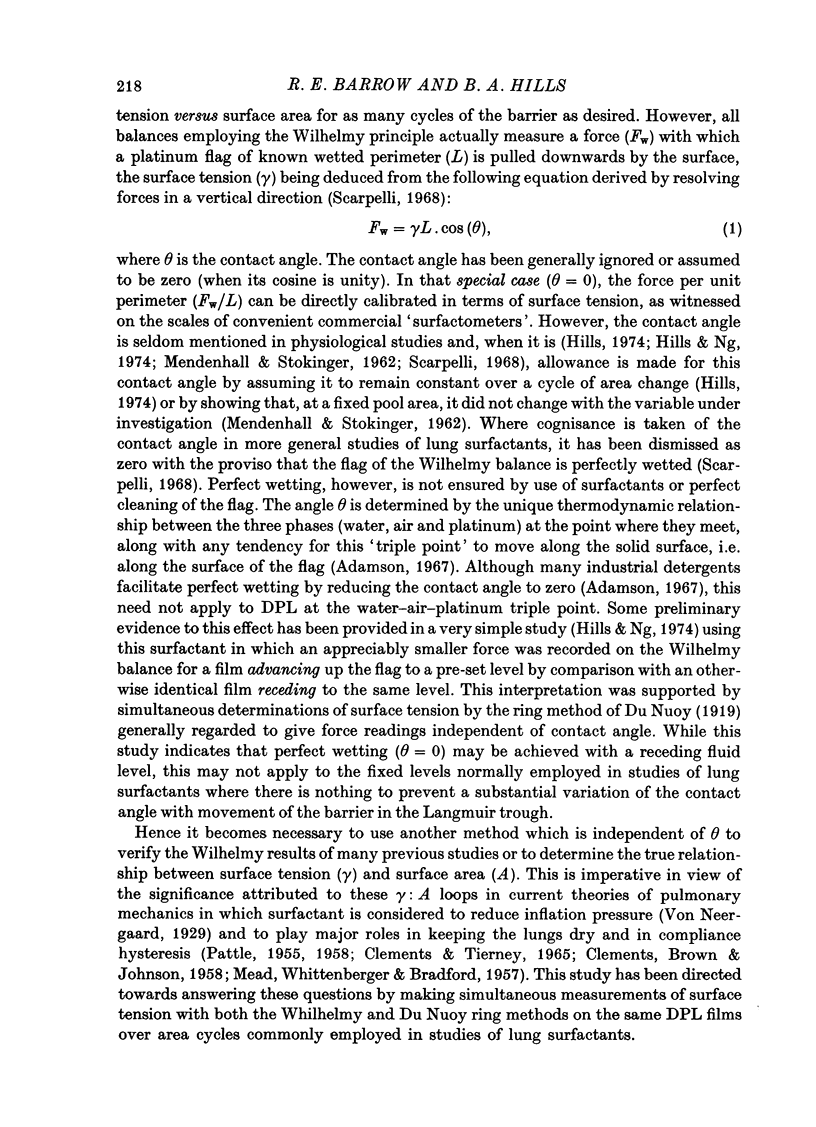
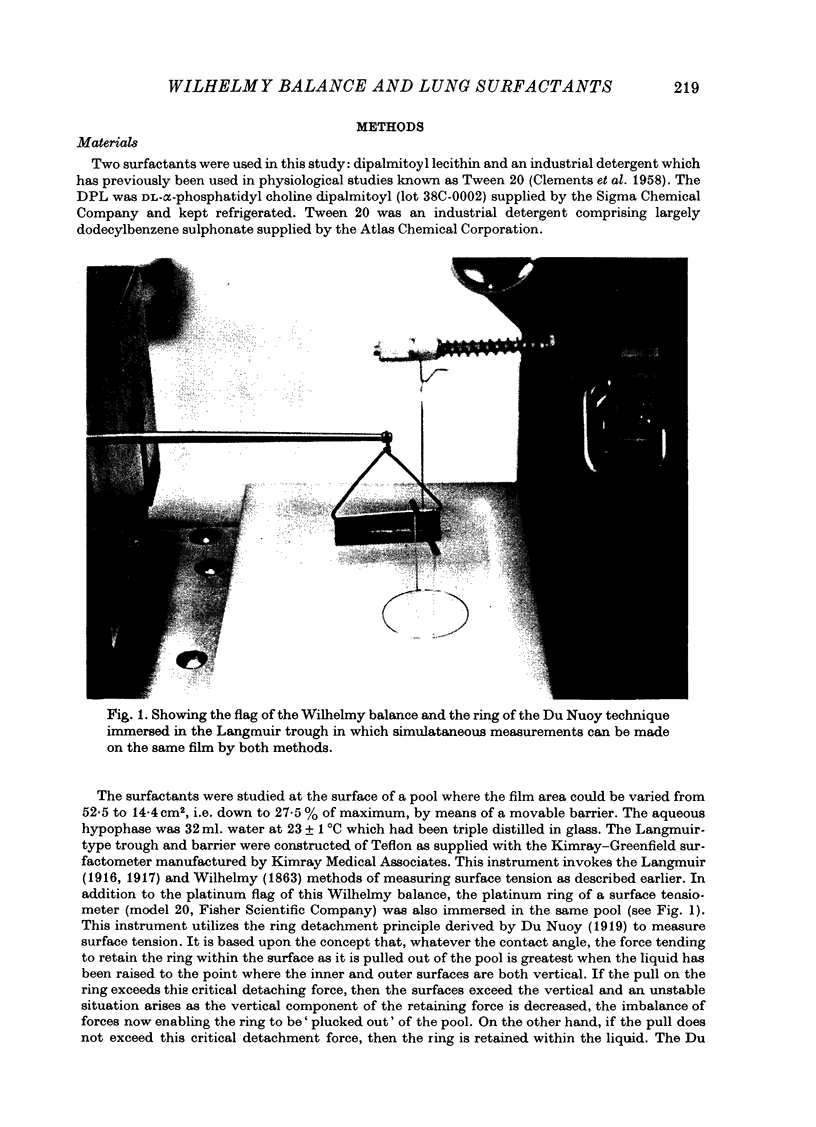
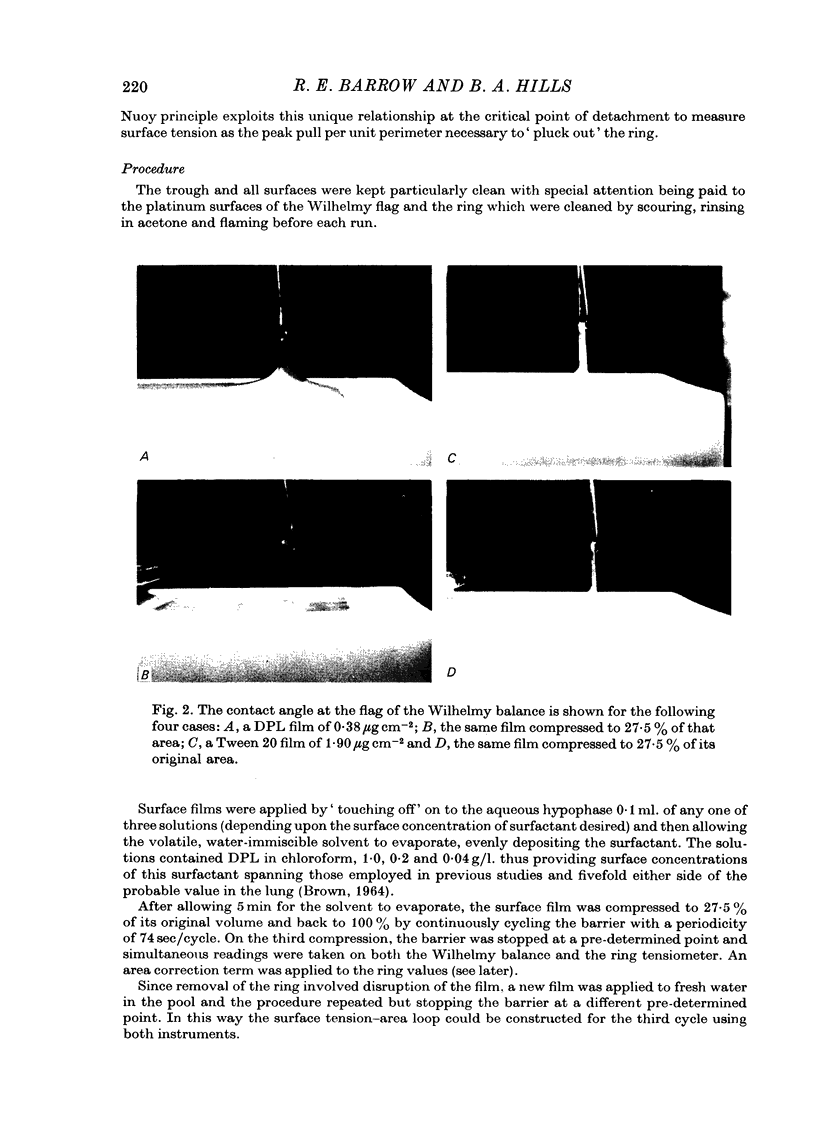


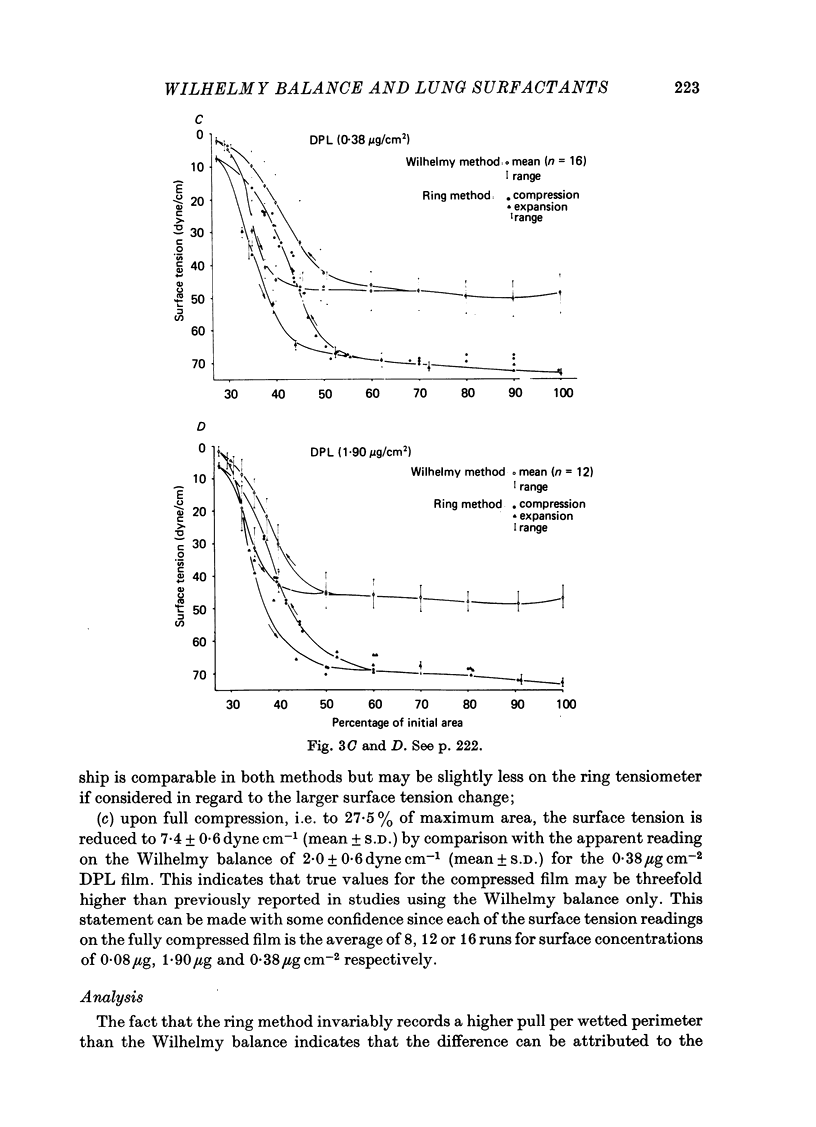


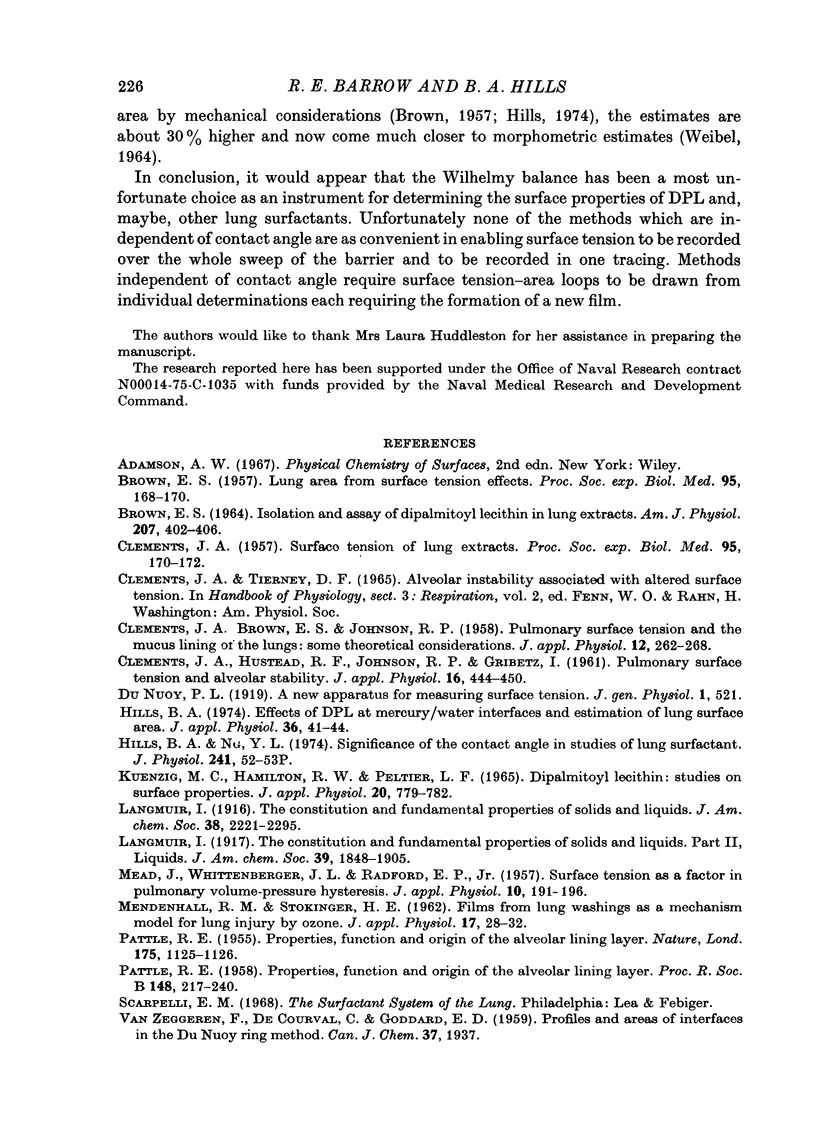

Images in this article
Selected References
These references are in PubMed. This may not be the complete list of references from this article.
- BROWN E. S. ISOLATION AND ASSAY OF DIPALMITYL LECITHIN IN LUNG EXTRACTS. Am J Physiol. 1964 Aug;207:402–406. doi: 10.1152/ajplegacy.1964.207.2.402. [DOI] [PubMed] [Google Scholar]
- BROWN E. S. Lung area from surface tension effects. Proc Soc Exp Biol Med. 1957 May;95(1):168–170. doi: 10.3181/00379727-95-23155. [DOI] [PubMed] [Google Scholar]
- CLEMENTS J. A., BROWN E. S., JOHNSON R. P. Pulmonary surface tension and the mucus lining of the lungs: some theoretical considerations. J Appl Physiol. 1958 Mar;12(2):262–268. doi: 10.1152/jappl.1958.12.2.262. [DOI] [PubMed] [Google Scholar]
- CLEMENTS J. A., HUSTEAD R. F., JOHNSON R. P., GRIBETZ I. Pulmonary surface tension and alveolar stability. J Appl Physiol. 1961 May;16:444–450. doi: 10.1152/jappl.1961.16.3.444. [DOI] [PubMed] [Google Scholar]
- CLEMENTS J. A. Surface tension of lung extracts. Proc Soc Exp Biol Med. 1957 May;95(1):170–172. doi: 10.3181/00379727-95-23156. [DOI] [PubMed] [Google Scholar]
- Hills B. A. Effects of DPL at mercury-water interfaces and estimation of lung surface area. J Appl Physiol. 1974 Jan;36(1):41–44. doi: 10.1152/jappl.1974.36.1.41. [DOI] [PubMed] [Google Scholar]
- Hills B. A., Ng Y. L. Proceedings: Significance of the contact angle in studies of lung surfactant. J Physiol. 1974 Aug;241(1):52P–53P. [PubMed] [Google Scholar]
- Kuenzig M. C., Hamilton R. W., Jr, Peltier L. F. Dipalmitoyl lecithin: studies on surface properties. J Appl Physiol. 1965 Jul;20(4):779–782. doi: 10.1152/jappl.1965.20.4.779. [DOI] [PubMed] [Google Scholar]
- MEAD J., WHITTENBERGER J. L., RADFORD E. P., Jr Surface tension as a factor in pulmonary volume-pressure hysteresis. J Appl Physiol. 1957 Mar;10(2):191–196. doi: 10.1152/jappl.1957.10.2.191. [DOI] [PubMed] [Google Scholar]
- MENDENHALL R. M., STOKINGER H. E. Films from lung washings as a mechanism model for lung injury by ozone. J Appl Physiol. 1962 Jan;17:28–32. doi: 10.1152/jappl.1962.17.1.28. [DOI] [PubMed] [Google Scholar]
- PATTLE R. E. Properties, function and origin of the alveolar lining layer. Nature. 1955 Jun 25;175(4469):1125–1126. doi: 10.1038/1751125b0. [DOI] [PubMed] [Google Scholar]
- PATTLE R. E. Properties, function, and origin of the alveolar lining layer. Proc R Soc Lond B Biol Sci. 1958 Feb 18;148(931):217–240. doi: 10.1098/rspb.1958.0015. [DOI] [PubMed] [Google Scholar]
- Weibel E. R., Gil J. Electron microscopic demonstration of an extracellular duplex lining layer of alveoli. Respir Physiol. 1968 Jan;4(1):42–57. doi: 10.1016/0034-5687(68)90006-6. [DOI] [PubMed] [Google Scholar]




